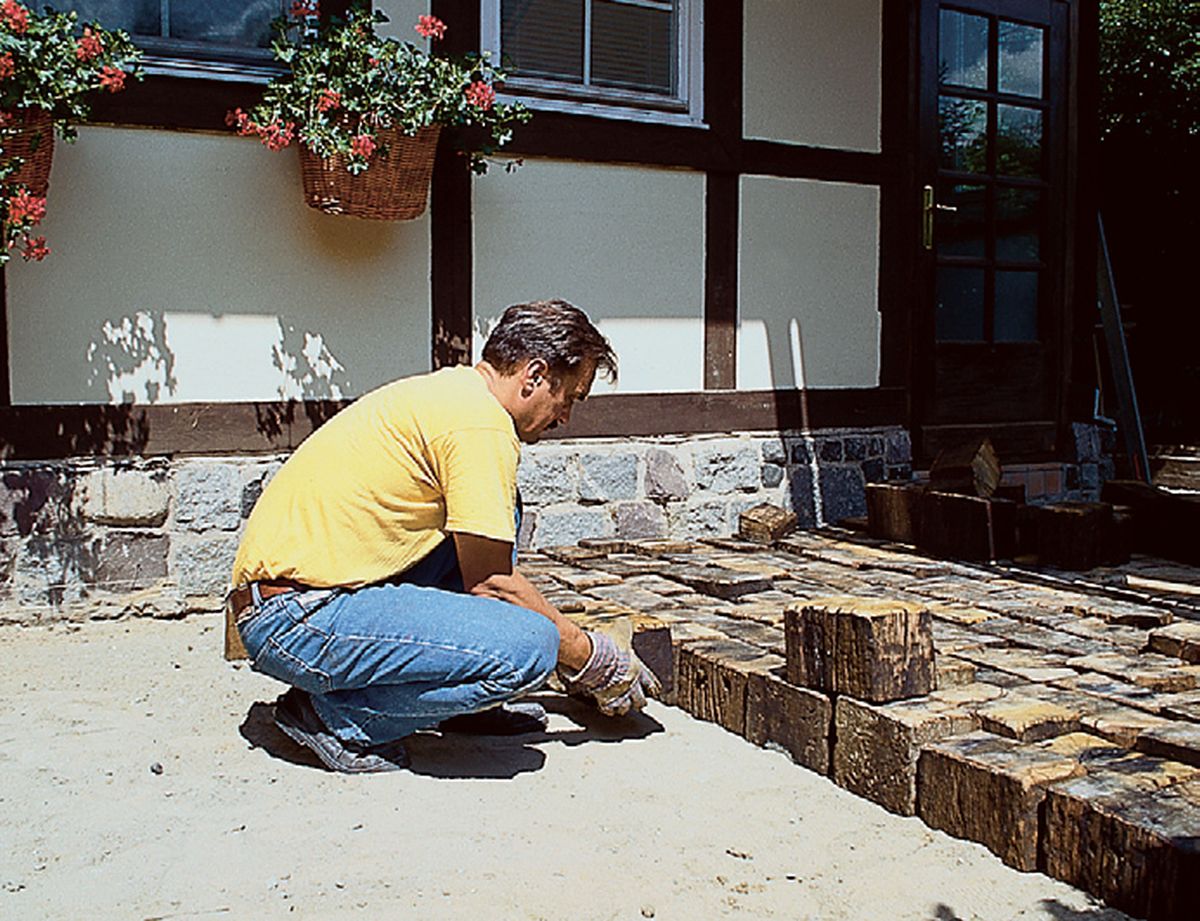 Wooden cubes in the outer area.
Wooden cubes in the outer area.
Wooden paving stones to be placed outside the building are distinguished as square and round. The square block consists of sections of rectangular beams or sleepers. The round cube is made of machine-peeled softwood logs.
Due to the particularly strong absorption of moisture and the associated swelling, or shrinkage (on drying) the following preliminary work is necessary when laying outdoors.
With bound surfaces, e.g. a slope must be made of concrete, so that the water, flowing through the gaps, could run well. With constants, side restrictions, e.g. building walls or walls, two sides of the wooden cube surface must remain open.
Before laying, very dry cubes should be sufficiently moistened for several days. First, an excavation is made in the load-bearing soil. For the depth of the trench, the height of the wooden cube used and, additionally, the height are taken into account 5-10 cm for a layer of sand or gravel.
Then a layer is laid (5-10 cm) sand or gravel. The layer is gradually stretched by lateral gauges made of horizontally positioned square timber. A simple board or a square timber is used for this, which is drawn with lateral sliding movements on the gauges.
The cubes are then placed side by side on the surface. In order to obtain better cohesiveness of the joints, cubes are selected according to their diameter. Next to large diameter cubes, smaller ones are placed. When the entire surface is laid, the gaps are filled with sand. For this purpose, sand is poured abundantly on the surface of the cube and introduced with a broom into the crevices.
The currently placed cube is compacted with a compactor or a vibrating plate. Then the gaps are filled with sand again.